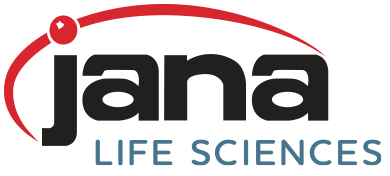Cognitive Computing, Industry 4.0, Predictive Maintenance, Data Conditioning…What Does It All Mean?
In today’s connected world, there are business terms that come and go and those that change form but still have the same meaning. So how do you go about keeping up with the ever-changing digital landscape terminology while knowing exactly what to do once you’ve deciphered it? It isn’t easy, is it? But don’t worry, because by reading this post, you’ve taken the first step in making sure your business can operate intelligently by actively seeking the newest information and trends about the most important topics in your industry. So let’s get started…
Four Industry Technical Terms and What They All Mean
Cognitive Computing, Industry 4.0, Predictive Maintenance, and Data Conditioning… these are some of the most common terms being used in tech today. Let’s go over them in detail so you can make educated decisions about how to use them as they relate to your particular business interests.
What is Cognitive Computing?
Have you ever heard of artificial intelligence? Well, cognitive computing is directly related to artificial intelligence in that it simulates human thought processes using a computerized model to identify patterns. In other words, cognitive computing uses machine learning algorithms to recognize and process compounded data over time. This process is designed to provide the user with a series of related results based on what the learned data determines to be the most likely intended request. As closely as possible it mimics how the human brain works, and in many cases even performs tasks faster and more accurately than the human brain can. What does this mean for you? Well, going forward, cognitive computing could be applied to other areas of your business as well. For example, consumer behavior analysis, personal shopping bots, customer service bots, travel agents, educational tutors, security, and just about any type of diagnostics. If you think about it, this is the next natural step as we already have digital personal assistants on our mobile devices and computers.
What is Industry 4.0?
This term refers to the transformation in the way we currently produce products due to the digitization of manufacturing. The number four represents the fourth transition that has occurred in manufacturing over time. The first was the industrial revolution, which used water and steam as its main mechanism. The second was assembly lines and mass production, which used electricity. The third which utilized computers and automation. The fourth, also known as Industry 4.0, is an expansion of the third revolution, which refers to how it will enhance computers and automation with smart, self-thinking systems that use data and machine learning.
What is Predictive Maintenance?
The purpose of predictive maintenance is to predict when a piece of equipment might fail and to prevent it from failing by proactively replacing it or performing the necessary maintenance to it. This helps avoid unplanned reactive maintenance, while saving money on the cost of performing too much preventive maintenance. The way predictive maintenance works is by using condition-monitoring equipment to assess any given asset’s performance in real-time. The main component in making this process work is the Internet of Things (IoT). The IoT process enables different assets and networks to communicate and work together to share, analyze data, and other similar actions. This is important because these systems depend on the predictive maintenance sensors to gather information and analyze it to find areas of concern so it can proactively perform the recommended maintenance before the equipment actually encounters a problem.
What is Data Conditioning?
Data conditioning, also referred to as data cleaning or data cleansing, is the detection and removal of errors of corrupt or inaccurate information on a database. Once identified, the errant or erroneous data is modified, replaced or deleted. Failure to perform proper data conditioningcan lead to any number of problems, including the compilation of false data results. However, data conditioning itself doesn’t come without problems. Improper data conditioning can sometimes result in losing vital information or other important data. Fortunately, there are plenty of tools that can be used for data conditioning. Some statistical programs have the data validation built in – actually catching some pre-conceived data errors, such as non-valid variable codes, automatically as they are entered.
The Bottom Line
Time marches on, and so does the evolution of technology. It looks like artificial intelligence, machine learning, and the way we used to do business is going to continue changing. That means staying current with the ever-changing trends is no longer optional…it’s mandatory – if you want your business to succeed and grow.
What’s Next?
If you would like to discuss business, software, engineering solutions, or need XML consulting services, please Contact Us today. JANA is an experienced technical services company that specializes in authoring, managing and publishing technical documentation. We would love the opportunity to help you take your business to the next level.
